RPGamer’s Forgotten Favourites

There are a plethora of RPGs in the world, and it’s impossible to play them all. There are games that deserve to be lost to space and time, while other titles we long for a return to. From childhood darlings to more modern titles that we feel didn’t get a fair shake, there are tons of forgotten favourites. The RPGamer staff have curated a list of games that they feel shouldn’t be forgotten to the sands of time, and that maybe deserve another chance in the spotlight.
The 7th Saga
In the years between the releases of Square’s super-popular Final Fantasy IV and VI, future partner Enix, released a traditional turn-based RPG titled The 7th Saga. The game focuses on the journey of seven heroes to retrieve seven powerful runes of ages past for their elderly king, with the promise that the one to do so will become the heir to the throne of the world called Ticondera. Instead of forming an ensemble team like in many other RPGs, the diverse cast of The 7th Saga is in a competition, and one of them has secretly hired a bounty hunter to help them emerge victorious. Players choose one of the heroes to control and can form an alliance with another hero, but more often than not, when contenders find each other, duels ensue. Runes are collected and offer MP-free skills and spells to be used in combat. They’re invaluable in this difficult game of two-member maximum parties.
The 7th Saga has a lot of little things going for it. The plot of trying to outwit and outlast other contenders for the crown is quite different from other games at the time, and the late-game twist is a welcome change from what players think is taking place. The graphics are quite well done and the articulation and movements of both characters and enemies in battle, along with battle animations, are pretty to look at. Boss designs are varied enough from randomly encountered enemies and the camera angles during battles make them look very imposing. Meanwhile, a crystal works as a heads-up display that works anywhere enemies appear. It works as a heads-up display and shows enemy locations and highlights locations of runes, making avoiding random battles a bit easier and locating the top treasures less time-consuming. — Matt Masem
Contact
I bought Contact on a whim when I saw it in a budget bin, as it was pretty much forgotten as soon as it was released I didn’t hear much about it when it came out, but I do remember seeing just a few cute screenshots online. And those are what sold me on Contact. The game is a mixture of a pixelated world and a more modern sprite world, and you are in the middle of it.
You are not in control of Terry, the main protagonist. You are also not in control of the professor, who resides on the top screen of the Nintendo DS together with his very cute dog. No, you are yourself a character in the story and you will interact with the professor and and will guide Terry. During this action RPG you have to help the professor with his ship trouble and find a way for Terry to get home. Terry will battle his way through dungeons, gaining skills and suits, and will battle big bosses, while the professor in all his pixelated glory fumbles around on his screen.
Contact can feel a bit clunky from time to time and the combat can become repetitive. But I really wanted to give this game a spot on the forgotten favourites list, since its style is so unique and should be experienced by more people. — Erik van Asselt
Fragile Dreams: Farewell Ruins of the Moon
Although the Wii had a larger library of RPGs than Nintendo’s preceding two consoles, many of these games went overlooked at the time of their release and are largely forgotten today. Among them is a curious action RPG, Fragile Dreams: Farewell Ruins of the Moon. Fragile Dreams takes place many years after an unknown apocalyptic event caused the near-extinction of the human race. A teenage boy named Seto recently lost his grandfather, the only other person he ever knew, and sets out to find other people in a lonely, empty world.
Although Fragile Dreams takes many cues from survival horror games, it is not scary, preferring an atmosphere that is eerie and unsettling at times, but mostly melancholic. Fragile Dreams is a beautiful game that is excellent at conveying emotions, particularly loneliness. It does this not just through the plot and characters, but also through the abandoned locations Seto explores, the memories he uncovers about the world right before the end, and even the music. The gameplay is a bit rough and the RPG elements are arguably arbitrary, but Fragile Dreams still makes for a fantastic, fittingly somber experience. — Cassandra Ramos
Grandia Xtreme
Grandia Xtreme is an enjoyable but heavily flawed game that was ahead of its time in some aspects. Designed as an offshoot to the regular Grandia series, the game tinkers with its tried-and-true method and gambles on a few new things. The game plays out like an early rogue-lite, character levels stick, but every time a player enters a dungeon enemies reset, as do treasures. After a time, early dungeons evolve, with players finding higher-level enemies and gear to keep up with the story. Obtaining gear from drops, crafting magic through mana eggs that may have random attributes attached to them, and grinding in dungeons feel like the hallmarks of a rogue-lite, and if the game had been made a decade later it could have been a classic of that genre. As it stands it is a fun look into some of the early thoughts of making a replayable game with a lot of customization.
The regular Grandia gameplay is here as well, with enjoyable, well-rounded, turn-based combat. The story is definitely a mixed bag, bland and with terrible voice acting, but I’d argue that it reaches “so bad it’s good” territory. This is because somehow, against all conventions, they hired Hollywood stars Mark Hamill, Dean Cain, and Lisa Loeb and gave them the note “We’re doing this all in one take so just go ham”. That blasting of the senses alone makes going through the game worth it. This is not a game to be taken seriously, so grab some popcorn, turn off your brain, and just enjoy the ride for what it is: the equivalent of a cheesy B-level action movie. — Ryan Costa
Heaven and Earth
Back in the SNES era, there were many games and series that aimed high with their themes and none more so than Quintet’s Heaven and Earth games. Soul Blazer, Illusion of Gaia, and Terranigma were games with a vision, sharing with the player parables of creation, destruction, and transformation unlike anything before or since. They were also weird and disjointed at times as their themes exceeded their own narrative capacity.
The artistry with which Quintet’s developers crafted their sprite graphics cannot be denied, and the influence of these games on sprite-based action games can be seen all over. If any classic series can be said to deserve a port, upmake, or full remake, it’s this trilogy of philosophical oddities. And, with last year’s surprise appearance of Actraiser, a spiritual precursor to Heaven and Earth, such a remake seems ever more likely. We can only hope. — Michael Baker
The Last Story
Following the release of Lost Odyssey, Mistwalker decided to stray from the traditional turn-based RPG mechanics and experiment with something new: an action RPG for the Nintendo Wii. With director Hironobu Sakaguchi and composer Nobuo Uematsu on board, The Last Story took the best of the Final Fantasy series and injected it with modernized gameplay. Players control Zael on a journey around Lazulis Island and the dungeons surrounding the castle city. Fans of Lost Odyssey and the PlayStation-era Final Fantasy games will feel right at home with the great storytelling, charming characters, and high-quality soundtrack that brings it all together.
Even though the game has an entertaining plot, the romance between Zael and Calista adds an extra flavour to the mix. Zael is a man full of integrity, striving to join a corrupted knighthood because he thinks it’s the honourable thing to do. Calista is a strong-willed woman of royalty, refusing to accept her fate as a political piece in a pre-arranged marriage. The moments Zael and Calista share together make their romance all the more convincing, so when fate drives them apart, Zael must not only save those around him but find a way to get closer to Calista without compromising his true self.
Even though The Last Story has a proper ending, a sequel would be a welcome addition. Like Final Fantasy, it wouldn’t necessarily have to be related to this game’s story but could retain some of the game’s elements that worked so well whilst improving on others. If not a sequel, then perhaps a remaster would suffice, especially if it involves enhancing the Wii’s graphical limitations. The good news is that Mistwalker is still producing fine games, as evidenced by its recent release, Fantasian. — Elmon Dean Todd
Lost Odyssey
Final Fantasy creator Hironobu Sakaguchi founded Mistwalker not long after leaving Square, forming a deal with Microsoft to develop RPGs for the Xbox 360 in an attempt to court Japanese audiences that didn’t take to the console. The result was two games that were exclusive to the system, Blue Dragon and Lost Odyssey. In a lot of ways, Lost Odyssey is something of a modern take on old-school Final Fantasy, particularly as the game’s excellent soundtrack was composed by Nobuo Uematsu. What ultimately set Lost Odyssey apart was the game’s focus on the pathos of its immortal leads and the short stories written by Japanese novelist Kiyoshi Shigematsu that pop up periodically over the course of the game and help flesh out their backstories. While it is a stretch to say the game itself has been completely forgotten, its console exclusivity, unfortunately, limits the audience it can reach. Thanks to backward compatibility, it is at least still playable on all modern Xbox systems.
Even though the game’s overall plot ultimately amounts to stopping the obviously evil bad guy’s machinations, it’s the more intimate character moments that are the real star of the show. Whether it is Kaim’s promise to watch over his grandchildren Cooke and Mack after the death of their mother, or Jansen growing from a bumbling comic relief character to someone who manages to win the heart of the immortal Queen Ming, there will very likely be at least one moment that will move players emotionally, if not outright leave them in tears. While the game’s systems are a traditional old-school turn-based affair, there are just enough flourishes to spice it up, from the row system that protects characters in the rear to the ring system that incentivizes paying attention during party members’ attack animations. That’s not even getting into the gimmick of the game’s immortal party members automatically getting back up after a few turns after they have been knocked out in a neat twist that shows the game’s narrative elements informing the systems. — Ryan McCarthy
Lufia (Series)
The Super Nintendo was when I discovered RPGs, and I have been hooked for well over two decades. Chrono Trigger was the very first RPG I played, yet the Super Nintendo has no shortage of classic JRPG series. While it certainly is a cult favorite, the Lufia series seemed like it flew a little too under the radar for many gamers. First launched in 1993 with Lufia & the Fortress of Doom, the series has a prequel on the Super Nintendo, two Game Boy Color titles, and a 2010 action RPG remake of the second game for the Nintendo DS. It currently stands at 12 years since the last title, and it is unclear if we will ever get another one.
I have such a fondness for this series, even if it’s hard to discern between actual appreciation and earnest nostalgia. I remember having to grind for days early in the story in order to prepare for the boss battle against the three Imps. This was probably my first grinding experience in an RPG and my palms still sweat during this very battle when I replay it. The battle system is standard turn-based fare, with a visual presentation that reminds me of early Dragon Quest games. The dungeons are uncomplicated and the game features few puzzles, a concept that would be more elegantly implemented in Lufia II. The absolute highlight of this game is its soundtrack. Part of the reason I regard this as a classic is due to the incredible overworld, enemy, and boss battle themes. Decades later, they still do not disappoint. — Paul Shkreli
Lunar (Series)
Back in the ’90s, Japanese developers Game Arts and Studio Alex brought to life an incredible JRPG that saw several ports. First released on the Sega CD, Lunar: The Silver Star was one of the first JRPGs featuring animated cutscenes and voice acting to come west. Although it plays like a standard turn-based RPG, the exceptionally talented staff, such as scenario writer Kei Shigema and composer Noriyuki Iwadare, provided Lunar: The Silver Star with an entertaining story intertwined with a beautiful soundtrack that was far ahead of its time. With memorable characters assisting the protagonist Alex in his quest to become a Dragonmaster and save the world, the character banter was one of the more endearing optional treats this game had to offer.
The sequel, Lunar 2: Eternal Blue, continued the game’s story a thousand years later, with several nice plot twists and rewarding homages to the original. There was a Sega Saturn game, Magic School Lunar!, which never saw a release outside Japan. Unfortunately, besides the numerous ports of Lunar appearing on PlayStation, Saturn, and even the PSP, the last original game in the series released outside Japan was Lunar: Dragon Song, which flopped and turned out to be a discredit to the entire franchise. Since then, the Lunar series has been dormant. But with the recent re-release of the Grandia HD Collection, also developed by Game Arts, there is still hope for a revival. — Elmon Dean Todd
Magical Starsign
I remember picking up Magical Starsign in an EB Games bargain bin; though it was pretty much forgotten as soon as it was released, I do remember seeing a few cute screenshots online, which were enough to sell me on it. Taking on the roles of six magic students from the Will-O-Wisp Academy, players will explore six different planets in search of their former teacher, Miss Madeleine. It’s an adorable and colourful game, chock full of cuteness and silly that is simply hard to resist!
While I wasn’t a huge fan of stylus-based games on the Nintendo DS, I was hooked on Magical Starsign. The turn-based combat is based on planetary signs, with magical power boosted if the character’s corresponding planet appears during their turn. When enemies return fire, players must tap their character before being hit to reduce damage. As the game progresses, players can use skills that move planets into a more advantageous position, and there’s a unique dark-and-light cycle that can also affect the gameplay. Thankfully, Brownie Brown’s legacy has not fully been lost, as it has made some great RPGs since becoming 1-Up Studios. There were a lot of great ideas in Magical Starsign’s kit, but it’s a shame the game has been long forgotten when it comes to memorable titles on the Nintendo DS. — Sam Wachter
Phantasy Star Zero
While the Phantasy Star series continues into the modern day with Phantasy Star Online 2: New Genesis, there have been many other action RPGs in this long-running series. Many have probably forgotten that among these games is a title for the original Nintendo DS, Phantasy Star Zero. Phantasy Star Zero takes the PSO formula of fighting monsters, forming parties with players online, and gathering loot to the handheld remarkably well. The graphics look decent for a 3D game on the DS and combat is fun, if a bit limited compared to the series’ console and PC entries. Although the official Nintendo Wi-Fi Connection shut down in 2014 for DS and Wii games, it worked quite well back then and it was really fun to play with other people. Local wireless still works at least.
Even without other people to play with, the story mode is surprisingly strong. Although the overall plot is the same, the story is told differently, with alternate events depending on the race of the player character. It’s an interesting, engaging story with likable characters and some astonishing connections to earlier games in the Phantasy Star series. While I had hoped for a sequel to this game for the 3DS, and haven’t played Phantasy Star Zero in a long time, I do look back fondly on this remarkably competent action RPG. — Cassandra Ramos
Shadow Hearts (Series)
I can count on one hand the number of horror RPGs I’ve ever played. Of these, the original Shadow Hearts will always hold a special place in my heart. At a time when my entire RPG worldview was basically steeped in medieval fantasy fare and sci-fi steampunk schlock, Shadow Hearts’ dark and gory cosmic horror themes and visuals represented something out of the ordinary. The pre-rendered environments and random enemy encounters made it feel like some unholy mash-up of Final Fantasy and Resident Evil; I mean, the opening section sees you investigate a bloodbathed train car while chasing a suspicious, tophat-wearing stranger – it’s no surprise that the game struck a chord with my younger self!
Even the gameplay was memorable, with the timing-based Judgement Ring system determining everything from successful combat attacks to world events and even shopping. Having to press a button at the right moments as a marker traveled around a dial was at least somewhat different, even if the concept is not entirely original. Still, it presented something beyond the turn-based combat menu selections I was used to in my RPGs up to that point.
Shadow Hearts didn’t exist as a one-off. Two sequels rounded out the PlayStation 2 trilogy, which is also directly connected to PlayStation title Koudelka. Though Covenant was a more direct sequel to Shadow Hearts, the third entry, From the New World, substantially veered away from the established narrative. It’s now been over a decade-and-a-half, and the series is due at least a reboot, if not a full-fledged continuation. — Pascal Tekaia
Tears to Tiara II: Heir of the Overlord
RPGs and visual novels have cultured a large crossover in their following, particularly from those more into the narrative side of RPGs. Much like Aquaplus’ more widely known Utawarerumono series, Tears to Tiara II: Heir of the Overlord is one that very much tries to take the best of both worlds, with a great story and a fine tactical combat system.
Very loosely based on the wars between Carthage and Rome, particularly the second war involving Hannibal, and drawing on Phoenician mythology, Tears to Tiara II tells a highly engaging story of revenge and the clashing of cultures as one side aims to assert its superiority over others. Also worth noting is the combat, which features input from well-regarded tactical RPG developer Sting. It’s easy enough to get the hang of, but there is a lot of depth to it as players make the best use of a wide range of characters. Plenty of variation comes into play as well, with lots of different objectives and battle maps to test Hamilcar’s forces. Also, players get to make frequent use of a quadriga-hauling elephant. The entertaining combat combines with a very strong narrative to make it a thoroughly enjoyable game. — Alex Fuller
Thousand Arms
I first bought Thousand Arms on the PlayStation because I liked the box art. The stylized text and anime characters looked right up my alley and it quickly became a turning point in RPGs for me. However, let’s address the elephant in the room, the reason it is a forgotten favorite. The game’s weapon and spell system is tied into a dating simulator and this is likely a reason many people shied away from this PlayStation classic. Honestly, if I had understood what that meant as a 13-year-old buying this I may have skipped the purchase myself, but luckily I enjoyed it. The quirky humor is actually quite entertaining, it is often more funny than it is creepy, and when I look back on each playthrough I can’t imagine the game without it. The fact that the game never takes itself too seriously really helped me enjoy it to the end and brought me back for subsequent playthroughs throughout the years.
Thousand Arms is much more than fan service and a dating simulator. Fresh off of games like Wild Arms and Final Fantasy VII, where I never really connected with the mostly silent protagonist, I found the flawed womanizer Meis Triumph to be a delightful change of pace. He grew on me as his character developed through what I would call a pretty standard but entertaining JRPG story. This game feels like a ‘90s anime; I felt as if I was Tenchi Muyo navigating a world much bigger than my character and it felt amazing. The animations and backgrounds are beautiful, detailed, and I would even say groundbreaking for the time. It is also one of the first games I remember having extensive voice acting that brought the characters to life, ensuring that I will never forget them. — Robert Orcutt
Vandal Hearts (Series)
It’s the late ’90s, and I’m just enjoying turn-based RPGs when suddenly an older family member starts playing Vandal Hearts. “Why does the game look like a giant chess board?” I ask. Well, you see, by turning the battlefield into a grid, it makes it far easier to separate enemies or position characters tactically to minimize losses. That is how I got introduced to the tactical RPG, my favourite genre to this day. Vandal Hearts was not too difficult, while still punishing players not playing strategically, has a fun graphic style that holds up today, and is not the longest game out there.
In Vandal Hearts, a lot of the staples of the genre still appear. The story, while on the shorter side, still follows political intrigue filled with betrayals and surprises. Characters evolve using a rudimentary class system that branches into two different choices at level ten before turning into that choice’s ultimate form at level twenty. The graphical style shows some rough edges from being in the PlayStation era, but also showcases delightful animations for each character that are different based on their class. Each character taking lethal damage had a geyser of blood spurt from them like it was an homage to a horror-comedy. These charming points, along with a lovable cast of characters make the game worth revisiting as a fan of the genre as an amusing snapshot of the early days, or as a perfect introduction to get a doubter to re-evaluate how fun tactical RPGs can be. — Ryan Costa
Wild ARMs (Series)
In pre-pandemic times, I would long for the days of going to the mall and browsing until a random game I have never heard of caught my eye. Wild ARMs was one of those games that practically jumped off the shelf at the store and into my hands, especially at a time when the PlayStation was lacking RPGs. It’s a turn-based JRPG with a bonkers Wild West sci-fi storyline involving magical summons, a giant golem, and a whole lot of aliens. The series has been dormant for quite some time, featuring six games across PlayStation, PlayStation 2, and PlayStation Portable.
The first game is probably the ugliest, but it has the most charm. Fantastic music, a trio of disparate strangers who become a makeshift family, and solid JRPG mechanics make Wild ARMs a great game, even if the graphics have aged particularly horribly. There was a 2018 mobile game that was only released in Japan and shuttered in 2020. Like many gacha titles borrowing from legacy IP, it featured the bones of the series without any of the charms. The mobile title itself was serviceable, and I enjoyed my time with it. It also served as the very last gacha title I would ever play before quitting them entirely in 2020. But no game in the series has my heart like the first one, warts and all. — Paul Shkreli
Xenosaga (Series)
When it comes to games in my book, a good story trumps all. Years later, I may not even remember what frustrated me most about a game’s combat system or how I felt about the graphics, but a strong narrative will always stay with me. Enter Monolith Soft’s PS2-era Xenosaga trilogy. This sci-fi epic blew me away with its sweeping and ambitious approach to storytelling, and now, years later, I’m still pining for more. The story of Shion, KOS-MOS, chaos, and the rest is told through the generous use of lengthy in-engine cinematics, to the point that the controller spends nearly as much time on the tabletop as in your hands. The combat system, maybe a bit obtuse for my taste (at least in the first game), but it is engaging, and the character designs are impressive and memorable. The world is just so well-imagined that it’s a real shame we haven’t seen any more of it since the series concluded in 2006.
Monolith Soft, of course, is still around today and has become even more well known for its Xenoblade series, which is tangentially related to Xenosaga. All the more reason to not throw in the towel and continue to hope for an eventual new installment in the latter series. If not that, the time is perfect, at least, for a remastered trilogy treatment, with some all-new bells and whistles thrown in for good measure. I, for one, would be willing to pour other 100-plus hours into a series replay, and it would be great if I could do so without digging out my old PS2. — Pascal Tekaia
We hope you enjoyed looking back at some forgotten favourites. Do you agree with our selections? Tells about some of your forgotten favourites in the comments below.
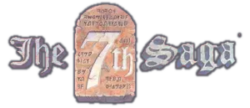



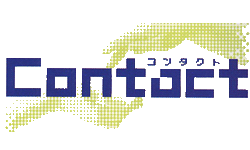



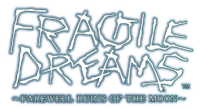



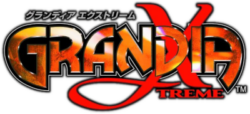







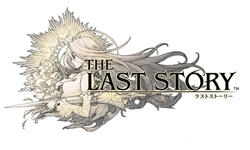
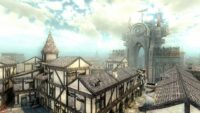
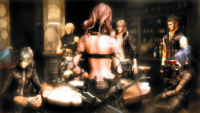

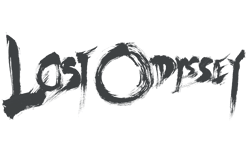



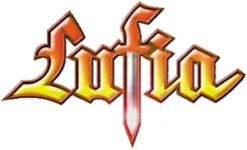







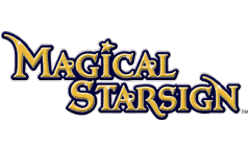



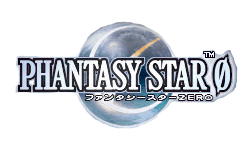


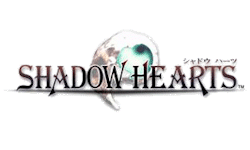



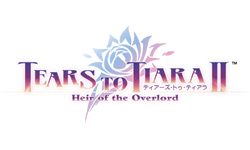



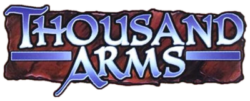
















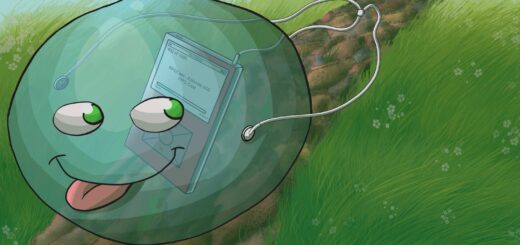



as a guy who beat all best rpg’s of this world i totally aprove this top, really good list of games, especially the old titles, very old school
I agree! I really loved the other staff members’ choice of games. In fact, when I tried to start my own article, I couldn’t write about some of the games because they had already been chosen. Much love to the old school stuff, too.
Whhoohoo, this is a very good list! These are truly underdog games worth exploring.
My personal favorites are Sakaguchi-san’s two missed epics (yeah, Last Story is experimental, but how on earth Lost Odyssey got ignored by the public is beyond me…)
Vandal Hearts is a series indeed, but the second game plays VASTLY different than the first (simultaneous moves vs turn based). It is a very take it or leave it thing.
Personally, I was a fan of the more traditional first one and despised the sequel, but recently became obsessed with the second… 🙂
I loved reading this! Several of the games mentioned are ones I remember seeing but not getting around to at the time. Now I have a better sense of what I ought to go back and play.
Can’t agree more. These games are really great picks, and also reminds me that I need to either go back and replay them or that I missed out on some that I need to play for the first time, like Magical Starsign and Grandia.